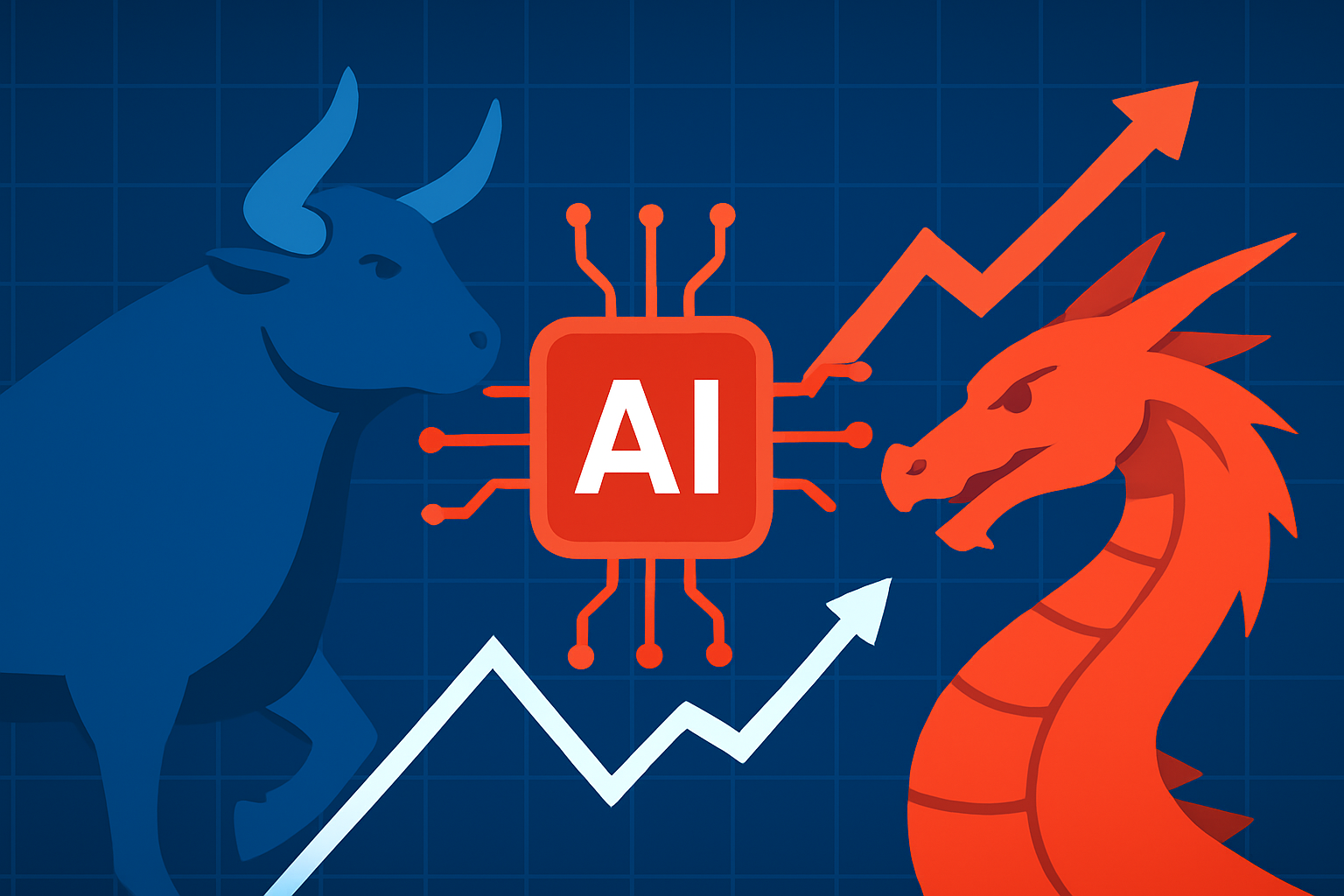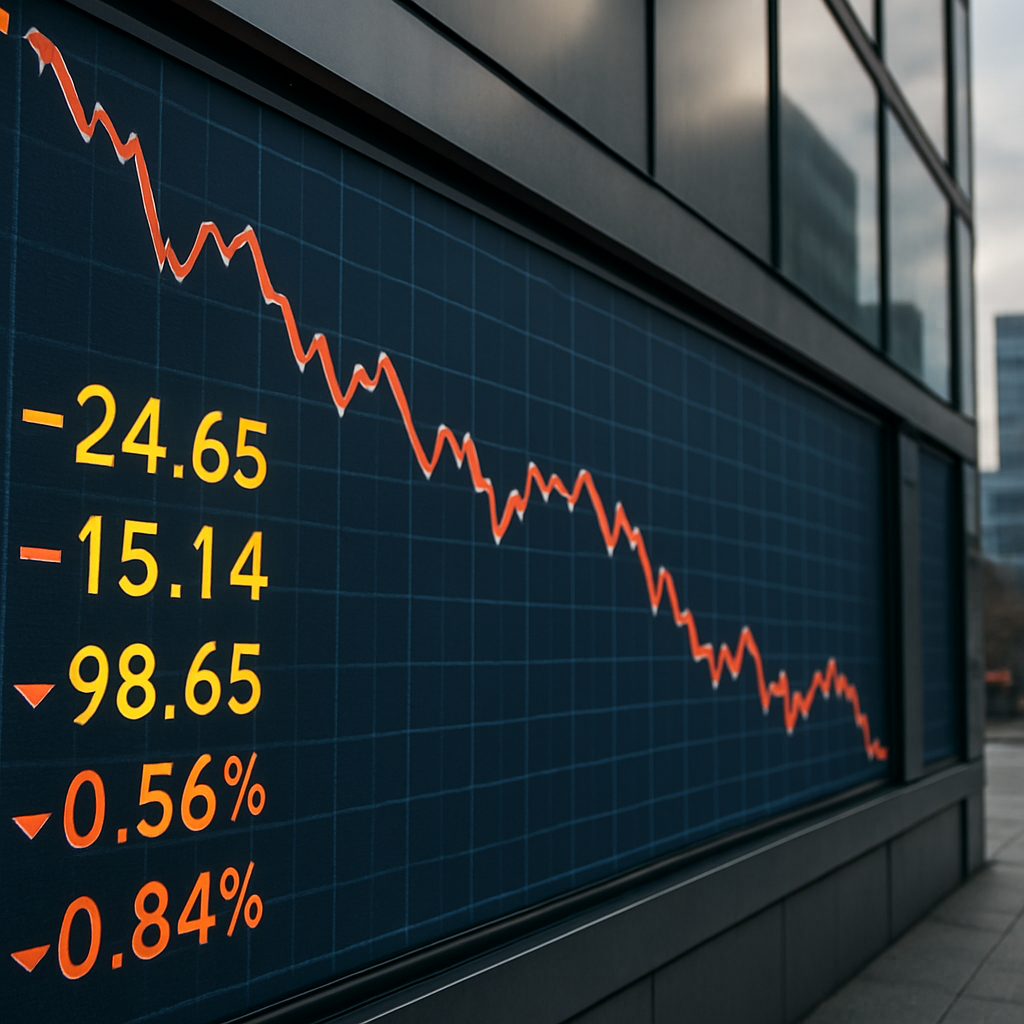The artificial intelligence (AI) boom has become the defining narrative of this market cycle. From chipmakers to cloud giants, nearly every major U.S. equity story in 2025 revolves around AI’s transformative promise. Yet, amid the euphoria, seasoned investors are beginning to question how long the current rally can sustain itself — and whether markets may be underestimating the risks lurking beneath the surface.
According to Reuters, roughly half of the S&P 500’s market value now has medium-to-high AI exposure, with valuations across key names in semiconductors, cloud infrastructure, and software reaching levels reminiscent of previous tech manias. While AI is undeniably reshaping global productivity and corporate strategy, the fear among investors is that the execution phase may not keep pace with expectations — potentially triggering a recalibration in high-growth valuations.
AI Spending Surges — but Returns Are Lagging
AI capital expenditure has exploded in 2025. The “Magnificent Seven” tech giants — including Nvidia, Microsoft, Alphabet, Amazon, and Meta — are expected to spend over $400 billion combined this year on AI infrastructure, data centers, and model development, according to Bloomberg Intelligence.
However, revenue growth from AI products is not yet matching the scale of investment. Cloud providers are expanding capacity faster than demand, and while AI services such as copilots and generative applications are proliferating, monetization remains nascent. Analysts from Morgan Stanley have warned that if AI-driven margins fail to accelerate by 2026, the “AI premium” embedded in many stock valuations could unwind sharply.
“Investors are pricing in not just continued adoption, but near-perfect execution,” said Sarah Levine, Senior Equity Strategist at Goldman Sachs. “The risk is that the infrastructure buildout outpaces monetization, and the returns don’t justify the massive capital deployment.”
Why This Matters for Investors
AI now accounts for a significant share of market concentration risk. The top five companies in the S&P 500 represent nearly 30% of total index value, much of it justified by AI exposure. If sentiment turns, the ripple effects could impact passive funds, growth ETFs, and even retirement portfolios tied to the index.
Meanwhile, smaller-cap and mid-tier firms involved in AI infrastructure — from semiconductor equipment makers to specialized data center REITs — could face pressure if financing costs rise or project timelines extend.
Beyond equities, the surge in AI investment has wider economic implications. Power demand in North America is rising rapidly due to data center expansion, creating secondary opportunities in utilities, energy infrastructure, and metals such as copper and lithium, which are critical for grid upgrades and server manufacturing. But if AI-driven demand falters, these supply chain beneficiaries may also face headwinds.
Future Trends to Watch
- Profitability Pivot: As AI adoption matures, investors will prioritize profitability over narrative. Expect greater scrutiny on ROI per compute dollar.
- Energy Efficiency: AI’s rising energy footprint may lead to regulatory or ESG pushback, spurring investment in green data center solutions.
- M&A Acceleration: Consolidation is likely as smaller AI startups with valuable models or IP are acquired by larger players under pressure to justify their spending.
- Policy and Regulation: The U.S. and Canada are tightening rules on data sovereignty, export controls, and AI model governance — factors that could impact future growth strategies and valuations.
Key Investment Insight
While the AI theme remains structurally bullish, investors should exercise discipline. The most resilient opportunities may lie beyond front-line tech names — in enablers like semiconductor supply chains, energy infrastructure, and industrial automation that benefit from AI demand but aren’t as exposed to overvaluation.
Portfolio diversification across AI-adjacent sectors and selective exposure to cash-flow-positive AI service providers can help mitigate downside risk if the “AI supercycle” encounters turbulence.
Stay Ahead with MoneyNews.Today
As AI shifts from promise to performance, investors must navigate both the innovation frontier and its economic reality. For ongoing analysis of where AI, technology, and markets intersect — stay tuned to MoneyNews.Today, your trusted source for actionable insights on global investment trends.





